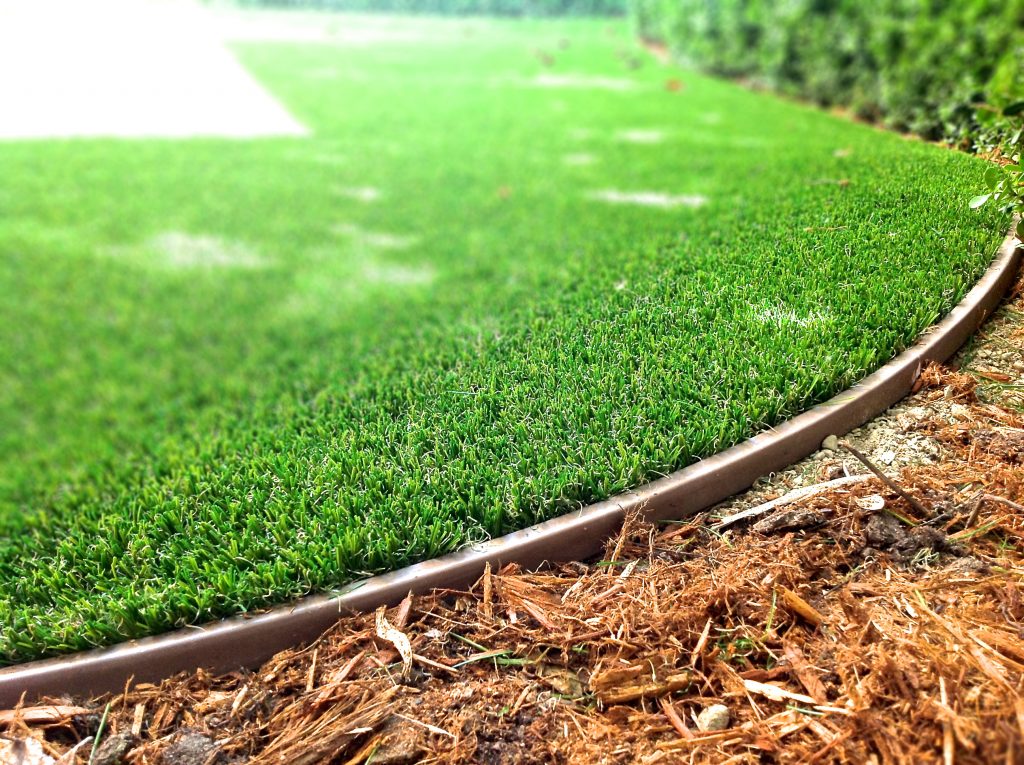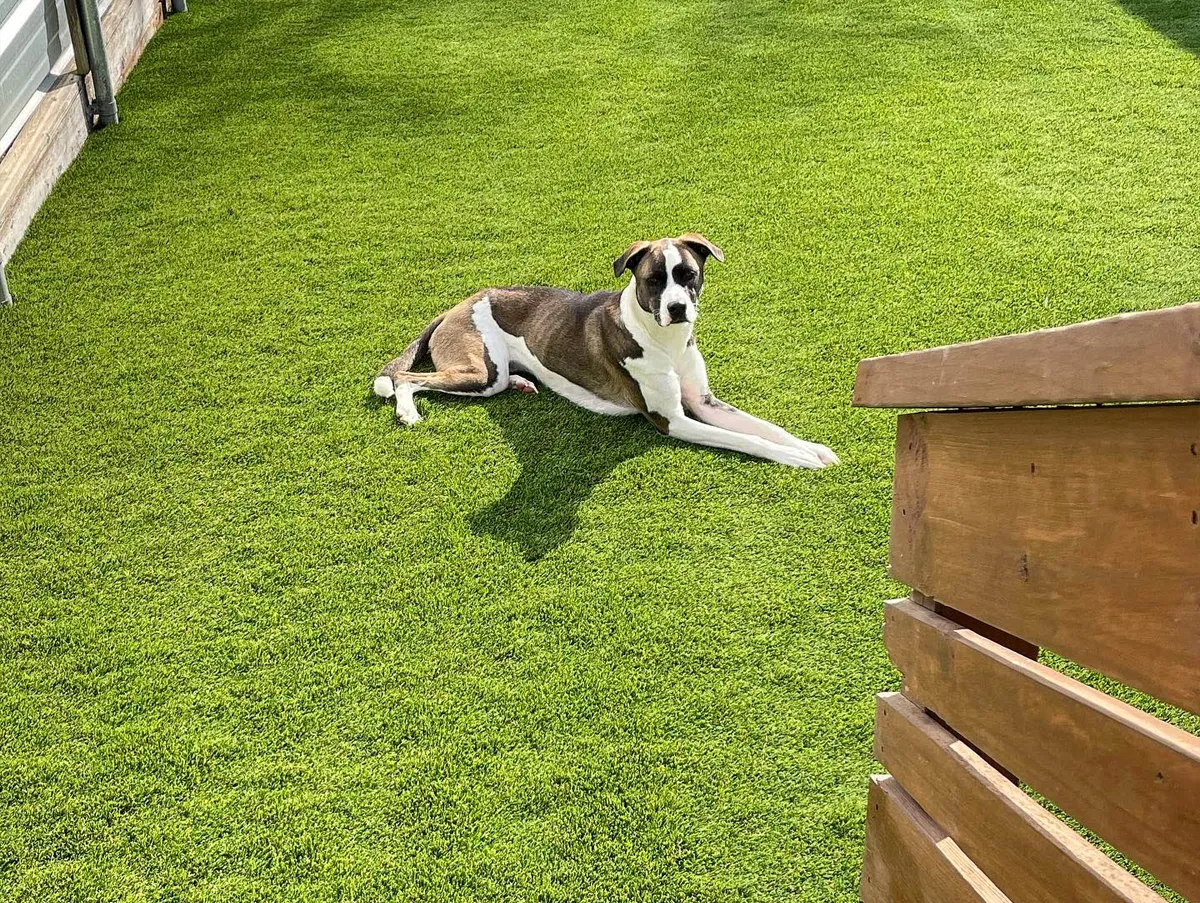Explore the Environmental Advantages of Opting for Synthetic Grass Solutions
The fostering of synthetic grass remedies provides a compelling possibility to deal with pushing ecological challenges. By dramatically minimizing water use and lessening the application of dangerous chemicals, these options not just advertise lasting landscaping yet likewise protect local ecosystems. The reduced carbon footprint connected with decreased maintenance tasks adds to a more sustainable strategy to land administration. Nonetheless, the ramifications of these advantages extend past mere conservation initiatives, questioning concerning their long-term effect on habitat conservation and overall environmental equilibrium. Checking out these dimensions reveals a complicated interaction worth thinking about.
Water Conservation Perks
One of the most substantial benefits of synthetic turf is its capacity to preserve water. In comparison, man-made turf does not require watering, substantially minimizing the total need for water sources.
By removing the requirement for normal watering, synthetic grass adds to sustainable landscape practices and aids reduce the ecological impact of excessive water intake. The preservation of water extends to the reduction of drainage, which can lead to dirt erosion and river air pollution.
Additionally, the installation of synthetic grass enables districts and property owners to designate water sources extra efficiently, concentrating on crucial uses such as drinking water and agriculture. The change in the direction of synthetic grass not only promotes liable water use but also aligns with wider ecological goals aimed at protecting all-natural sources.
As areas increasingly focus on sustainability, the water preservation advantages of artificial turf present a compelling situation for its adoption in industrial and property landscape design jobs.
Minimized Chemical Usage
The shift to synthetic grass dramatically lowers the reliance on chemical therapies frequently utilized in natural yard maintenance. Traditional turf monitoring commonly involves the application of herbicides, pesticides, and plant foods to advertise growth and control bugs. These chemicals can present dangers to human wellness, local wild animals, and the atmosphere, adding to soil and water contamination.
In contrast, man-made turf gets rid of the demand for these dangerous compounds. By decreasing the release of artificial compounds right into the community, fabricated lawn promotes much healthier dirt and water systems.
In addition, the absence of chemical overflow connected with synthetic grass installments aids shield neighborhood rivers from pollution, sustaining aquatic life and keeping biodiversity. Artificial turf companies phoenix. As areas significantly prioritize lasting practices, selecting synthetic grass provides a sensible solution that aligns with environmental preservation objectives. Through this shift, homeowner can delight in lavish green spaces without compromising ecological health and wellness, leading the way for an extra lasting future
Reduced Carbon Impact

In addition, the setup of synthetic grass can lead to considerable water preservation. Natural yards need significant quantities of water for watering, which not only contributes to view the carbon impact connected with water removal and therapy but additionally stress regional water resources. In comparison, artificial grass requires very little maintenance, requiring no watering, thus substantially reducing water usage and its associated energy costs.
Furthermore, the long life of synthetic grass adds to its decreased carbon effect. With a life-span of as much as 15 years or more, the need for constant replacements is decreased, causing less waste and lower energy consumption in manufacturing and disposing of standard turf options. Generally, synthetic grass provides a sustainable alternative for eco aware landscape design.
Environment Conservation
Environment preservation is an important consideration in the argument over landscaping options, particularly when contrasting artificial grass to all-natural yard. All-natural yard lawns frequently need substantial upkeep, including the use of herbicides, fertilizers, and chemicals, which can negatively affect regional environments. These chemicals can leach into the dirt and rivers, harming native vegetation and fauna Extra resources and interfering with neighborhood habitats.
Fabricated lawn eliminates the need for damaging chemicals, consequently safeguarding close-by wild animals and preserving the stability of surrounding ecological communities. The installment of fabricated lawn can lead to the conversion of previous lawn areas right into more biodiverse landscapes, such as pollinator gardens or native plant areas, which can sustain regional wild animals.
Eventually, the shift to man-made lawn not just saves water and decreases maintenance efforts but additionally cultivates a much more harmonious relationship between human activities and the all-natural atmosphere, promoting habitat preservation while doing so.
Long-Term Sustainability
Lasting sustainability is a critical variable in examining the advantages of synthetic grass over typical lawn lawns. Among the most significant advantages of fabricated grass is its sturdiness; it can last up to 15-20 years with marginal maintenance, whereas all-natural lawn needs constant reseeding and replacement. This long life lowers the demand for consistent sources, such as water, fertilizers, and chemicals, which are necessary for keeping a healthy yard yard.
Additionally, synthetic grass contributes to a reduction in carbon discharges related to lawn treatment tools. Conventional yards commonly call for gas-powered lawn mowers, trimmers, and blowers, every one of which add to air pollution. Arizona turf. On the other hand, synthetic grass eliminates the demand for such equipment, advertising a cleaner atmosphere
In addition, the production of synthetic grass increasingly uses recycled products, enhancing its sustainability profile. As suppliers take on environmentally friendly methods, the ecological footprint of man-made turf continues to reduce.

Final Thought
The fostering of synthetic grass options provides considerable environmental benefits, consisting of considerable water preservation, lowered reliance on dangerous chemicals, and a reduced carbon impact. Man-made turf help in maintaining natural environments by decreasing land disturbance and promoting long-lasting sustainability with the usage of long lasting products. Collectively, these aspects emphasize the potential of synthetic grass to contribute favorably to ecological health and wellness and supply a feasible alternative to standard landscape design techniques in a progressively resource-conscious globe.
In contrast, synthetic lawn does not require watering, considerably decreasing the overall demand for water resources. By decreasing the release of synthetic compounds right into the community, fabricated turf advertises healthier soil and water systems.
Furthermore, the installation of synthetic lawn can result in significant water conservation. In comparison, artificial grass needs minimal upkeep, needing no watering, thus significantly decreasing water use and its associated power costs.
